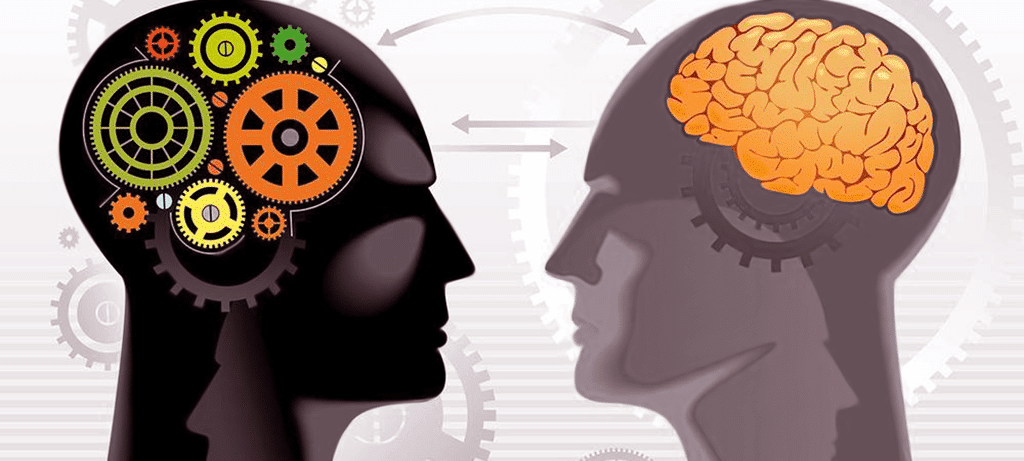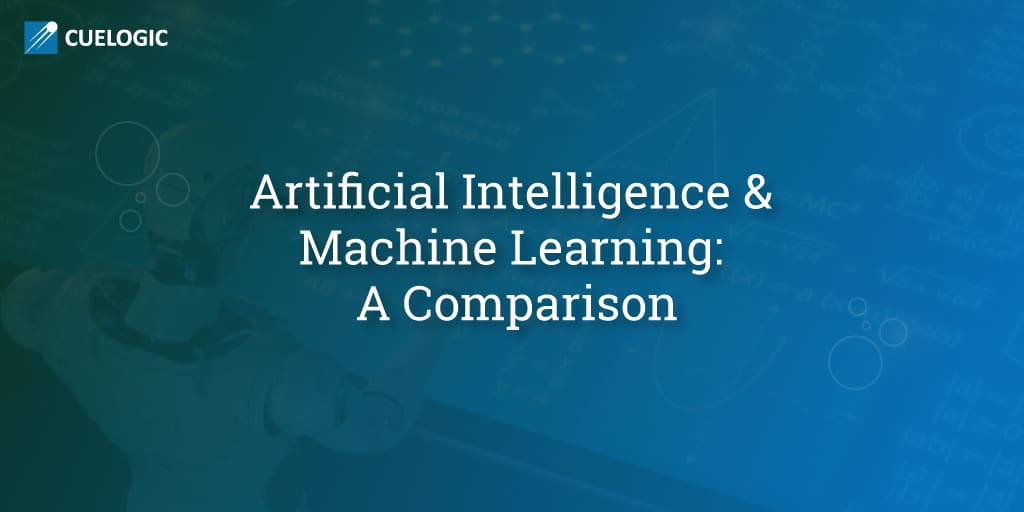Before we realized the arrival of Artificial intelligence (AI) in our lives, that was once thought only as a “sci fi”, digital world started buzzing the scientific words that we never thought we’d hear – Artificial Intelligence, Machine Learning, Data Crunching, Reinforcement Learning etc. Enough to get your head spinning.
We’ll start with two of the most commonly used terms -“Artificial Intelligence” and “Machine Learning” (ML
Ever wondered what is the difference between them?
Well, it’s not exactly a difference. Here is a comparison:

ARTIFICIAL INTELLIGENCE (AI)
Artificial Intelligence is the famous field of study looking for ways to create computers that are capable of intelligent behavior. A machine is deemed intelligent if it can do things normally associated with human intelligence.
To pass the Turing Test and qualify as artificially intelligent, a machine should be able to do natural language processing, automated reasoning and machine learning.
MACHINE LEARNING (ML)
Machine Learning is a subset of Artificial Intelligence and it explores the development of algorithms that learn from given data.
These algorithms should be able to learn from past experience (i.e. the given data) and teach themselves to adapt to new circumstances and perform certain tasks.
In programmatic advertising, for example, Machine Learning algorithms help us define our most relevant audience and direct our campaign in such way to best meet their preferences.
Let us understand both:
Introduction to Artificial Intelligence and Machine Learning
AI is a science that studies the technology of simulating natural intelligence (human brain) into machines/ software, machine learning is one of AI’s methods.
It is a field with broad scope, it aims at various goal that has become a field of study:
Here is a major list of AI goals:
1. Reasoning
2. Knowledge representation
3. Automated planning and scheduling
4. Machine learning
5. Natural language processing
6. Computer vision
7. Robotics
8. General intelligence, or strong AI
As mentioned in the list Machine learning is field emerged from one the AI goal.
It is a science that involves development of self-learning algorithms through analyzing the data and the pattern within it. These algorithms are more generic in nature that it can be applied to various domain related problems.
Machine learning uses statistics (mostly inferential statistics) to develop self learning algorithms. Recently machine learning became a standalone field and a very different approach of AI.
Machine Learning as a standalone AI present today!
AI is evolving, the things that were once considered as AI are now just programming tricks.
As long as they are programs, they are not AI, as means when machine analyses and take decisions and give the results all by itself, like a human brain and other smart organisms. As it is said:
Don’t model the World; Model the Mind.
When you Model the Mind you can create systems capable of Learning everything about the world. It is a much smaller task, since the world is very large and changes behind your back, which means World Models will become obsolete the moment they are made.
The only hope to create intelligent systems is to have the system itself create and maintain its own World Models. Continuously, in response to sensory input.
Following this line of reasoning, Machine Learning is NOT a subset of AI. It really is the ONLY kind of AI there is.
Latest Developments in AI
- In WWDC countdown: Apple unveiled some MAJOR artificial intelligence advancements at 2016 conference, it demonstrated an upgrade to Siri’s smarts.
- Google on the other hand is up with proactive digital assistant that provides with more useful reminders, recommendations and tips on local weather or traffic.
- Amazon Echo is ready to make your home a lot smarter by ordering flowers or pizzas for you through its technique of recognising informal voice commands.
- Facebook, Google and Microsoft are also working to incorporate intelligent “bots“into the voice- and text-messaging services that people use to chat with their friends.
- Facebook has also developed a lab that is 24*7 indulged in research of making intelligent machines. Research at the lab covers the full spectrum of topics related to AI, and to deriving knowledge from data: theory, algorithms, applications, software infrastructure and hardware infrastructure.
Real Time Examples of AI and ML
AI:
Cleverbot
It is a bot that is modeled after a human behavior and is able to hold human conversations. The responses are not programmed, it searches through the keywords from the phrases that it receives and matches the input with the saved conversations (data) and replies.
Self Repairing Hardware
Scientists at Caltech made an integrated circuit with sensors and actuators that repairs itself at the time of damage.
The sensors read temperature, current, voltage, and power and the chip is given a goal state, such as maximum output power. The chip makes the modification when it sense it is close to the goal with the help of actuators.
Previous researchers (e.g. D. Mange et. al) have used evolutionary algorithms in the self-repair of programmable logic circuits. The field of embryonics (embryonic electronics) may also lead to hardware that can self-replicate as well as self-repair.
Artificial Intelligence in Mobiles
Through traditional AI techniques like speech recognition, machine learning integration in iOS and Android, classification and natural language processing, researchers are trying to make our phones smarter.
The technique give us a more powerful application, such as Siri on iOS, kinect from Microsoft, and Google Assistant from Google.
AI on mobile device introduces some new challenges, such as limited computation resource and energy consumption etc.

ML:
Automating Employee Access Control
Amazon, one of the pioneers of machine-learning based recommendation engines launched a machine learning contest on Kaggle to determine whether it was possible to automate employee access granting and revocation.
Amazon has a considerable dataset of employee roles and employee access levels. They’re trying to develop a computer algorithm that will predict which employees should be granted access to what resources.
According to Amazon, “These auto-access models seek to minimize the human involvement required to grant or revoke employee access.”
Protecting Animals
ML is flourishing on earth, water and air at the same time.
Cornell University is busy working on an algorithm to identify Whales in the ocean so to prevent them from getting hit by the ships.
Also, Oregon State University is working on software that will determine which bird species is/are on a given audio recording collected in field conditions.
Identifying Heart Failure
Now, the criteria for diagnosis of heart failure can be extracted from free- text physician notes.
IBM developed a machine learning algorithm that scans through physicians free-form text notes (in the electronic health records) and synthesize the text using a technique called “Natural Language Processing” (NLP).
Similarly, a cardiologist can get help by reading another physician’s viewpoint on the diagnosis and figure out whether the patient has heart failure.
Conclusion
Machine learning is an umbrella term for different algorithms and technologies what is used to automate learning from new information. Many today’s artificial intelligence implementations are holistic, so they are relying heavily on machine learning to learn patterns from vast data sets.
Though AI goes deeper, it is not just a discipline that mimics human brain but formulate a theory of intelligence, in order to build intelligent machines.
